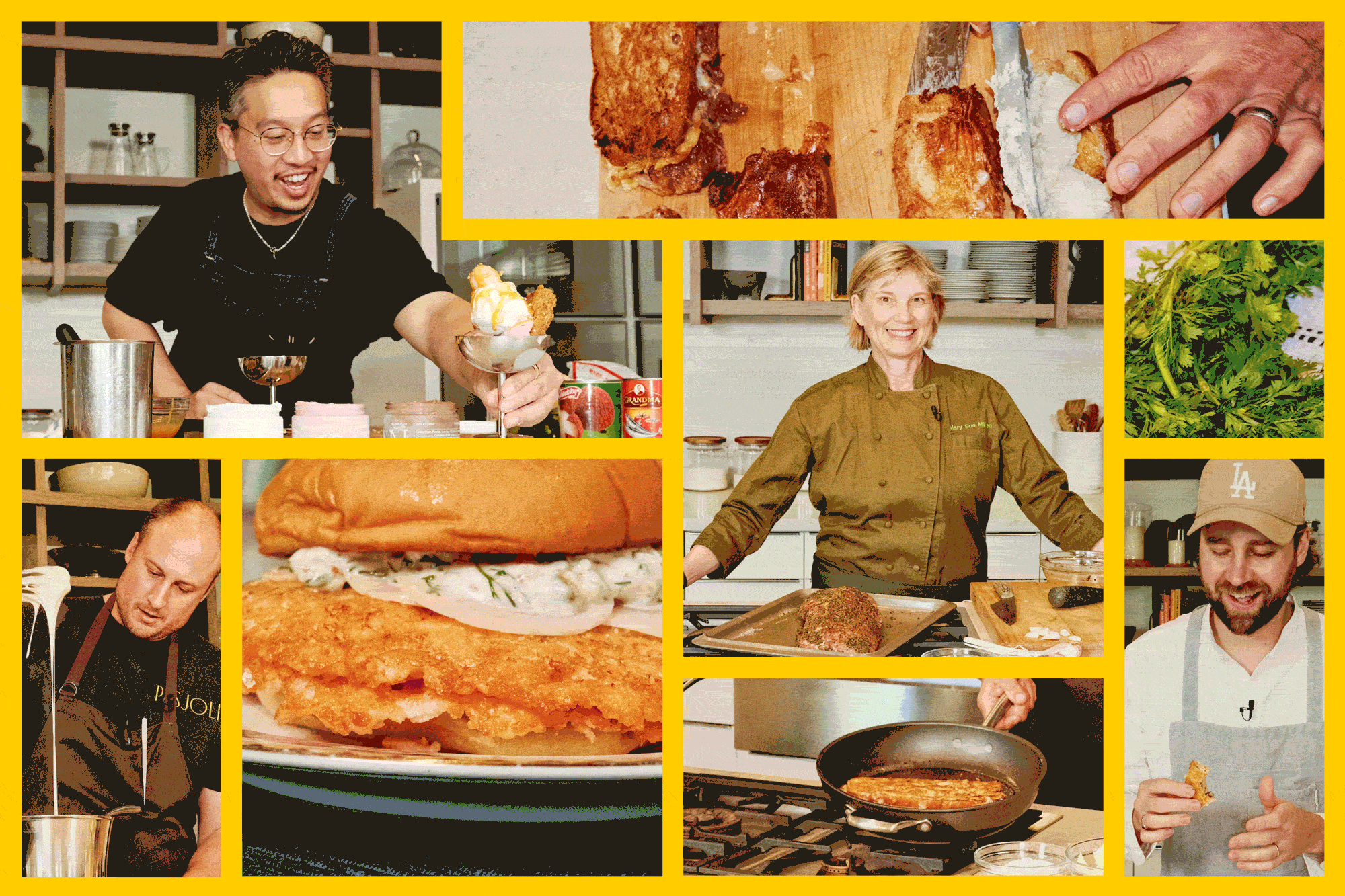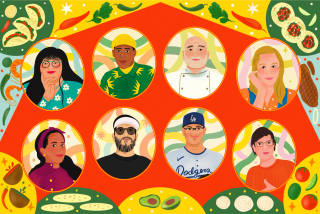Behind the Big Hats
- Share via
The chef’s toque is one of the few remaining articles of clothing that is unique to a particular profession. In Western countries, cooks may wear them even in quite humble eateries, and they’re de rigueur in ambitious restaurant kitchens around the world.
To explain its unique tall shape, it’s often said that the toque was inspired by the hats worn by the cooks at 6th century Greek monasteries or perhaps by monks fleeing the Turkish conquest of Greece in the 15th century. This is highly unlikely, because the familiar shape really dates from the end of the 18th century.
A story in Gastronomica, a new magazine from the University of California Press, shows that European chefs’ headgear took all sorts of shapes between the 16th and 18th centuries. Depending on where and when you’re talking about, chefs wore berets, stocking caps, pointed hats with tassels, caps with disk toppers (something like academic mortarboards, only round), starched Scottish caps and even skullcaps.
Fashion is wayward, of course, but there is a common thread in all these shapes-they’re indoor headgear. The typical European hat has always had a brim, but there’s no need to protect a chef’s face from rain or sunlight. The real purpose of chef’s headgear is to keep the staff’s hair out of the food.
And, of course, to indicate rank. As kitchens grew larger in the 18th century, it became more important to know at a glance who gave the orders that really counted. That’s what the tall toque did.
By the way, the tallest toques in the world seem to be used by the top chefs in Turkey; they call to mind the 20-gallon hats favored by the old-time cowboy star Hoot Gibson. Possibly it represents a local tradition. The confectioners in the palace kitchens of old Istanbul wore tall white caps shaped like the conical loaves in which white sugar used to come.
More to Read
Eat your way across L.A.
Get our weekly Tasting Notes newsletter for reviews, news and more.
You may occasionally receive promotional content from the Los Angeles Times.










